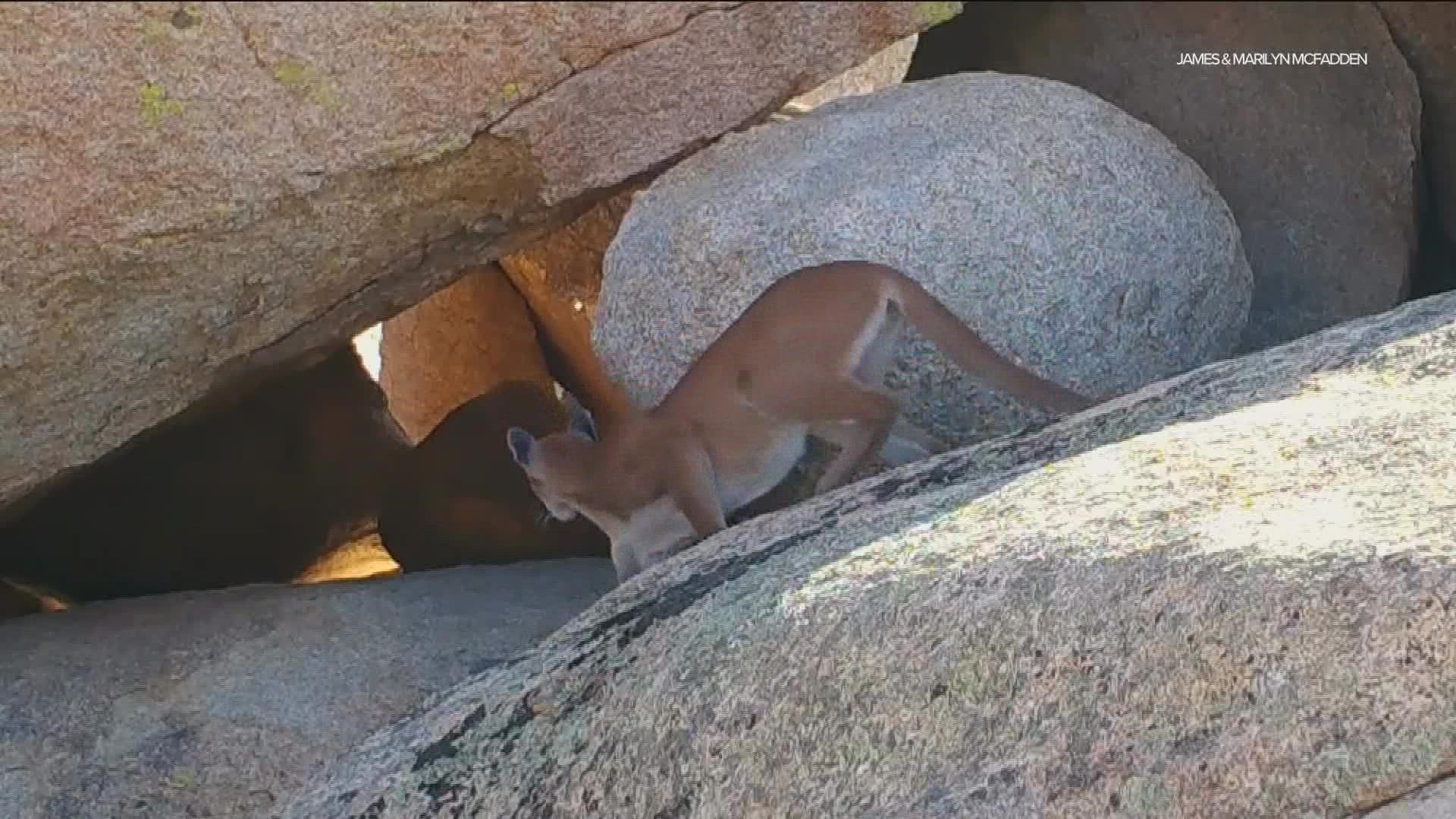SAN DIEGO COUNTY, Calif. — The recent death of LA's beloved mountain lion P-22 is a reminder that protected spaces and crossings are needed to ensure the health and safety of urban wildlife in Southern California. A new exhibit, 'Caught on Camera' at the San Diego Natural History Museum highlights the use of technology to study animals roaming around the county in an effort to help maintain biodiversity.
"It's capturing animals that are, most of them are secretive, like the mountain lion that are hard to see. That's why camera trap and technology and photography is so cool because it allows us to actually observe these animals' doing things that we wouldn't otherwise be able to see them doing," said Exequiel Ezcurra Director of Conservation Biology, Dr. Michelle Thompson.
While most mountain lions shy away from the limelight, there's always one rebel in the family.
"P-022's proximity to urban, a huge urban space, I think, made that cat special," said Dr. Thompson.
The famed Los Angeles cougar species was often talked about on social media, reported on and seen on camera traps roaming the eastern side of the Santa Monica mountains near Griffith Park. After years of severe health challenges stemming from habitat isolation, car strikes and rat poisoning, P-022 was "compassionately" euthanized back in December. Unfortunately, P-022's struggles are obstacles faced by all urban wildlife throughout Southern California, which includes our own backyard. Dr. Michelle Thompson pinpoints the harsh realities for our fellow mammals.
"Being stuck in artificially small habitats, not being able to move around, exposure to toxins and pollution (in the case of P-022, rat poisoning) and then also the dangers of roads. So, traffic is a big danger for urban wildlife," said Dr. Thompson.
The death of the beloved mountain lion continues to shed light on the importance of linking wild/protected spaces for wildlife to roam. Luckily for us, the layout of our county is a big help.
"We actually have all these urban canyons in San Diego, and you just don't build inside of canyons. And so, with those that allow us to have so much connectivity from one reserve, one big open area, to another. It's just a wonderful component we are gifted to have," explains Scott Tremor, a Mammalogist at The NAT.
Despite our ideal topography, getting from point A to point B has its challenges for our wildlife, whether they have two legs or four. Unfortunately, the bigger the animal, the higher the safety risk.
"They are just not as agile, and they are much more impacted. Generally, the larger those animals, the less there are. And so, populations are highly affected by just a single major roadway," said Tremor.
The San Diego Natural History Museum teams up with agencies that govern wildlife, along with transportation and utility agencies to make sure navigating crossings is less treacherous for them. There are already safe crossings under State Route 52 between Santo Road and Mast Boulevard, and another at Scripps Poway Parkway.
More projects are in the works including a crossing over the 15 near Rainbow, which would benefit the mountain lions traveling between the Santa Ana mountains to Palomar Mountain. There are also talks to improve a troublesome stretch of road, where the population of these cuties has boomed.
"One of the areas where animals are killing regularly is right next to Mount Woodson, along Highway 67. It's a pinch point. There is a really great population of these ringtails," said Tremor.
The NAT has been studying these tiny, long tailed cousins of raccoons because little is known about them in the Golden State. And with quite the populations in the boulders of Mount Woodson, they are working with Caltrans and other agencies for safe movement crossing the 67.
"There are many more planned. In the decision phases, as we find better ways for wildlife to persist in this region," stated Tremor.
Because we have to remember, our health is reliant on theirs.
"It's important to maintain biodiversity. People are also very connected to ecosystem health. So, it is important for people and nature," said Dr. Thompson.
If you are interested in learning more about how cameras are used in conservation, there will be a public talk on February 28 at The NAT at 7:00 p.m. Click here for more details.
WATCH RELATED: Poway mountain lion caught on camera

